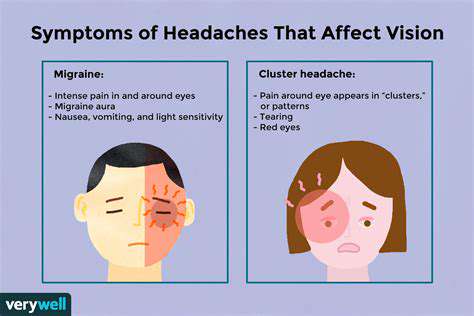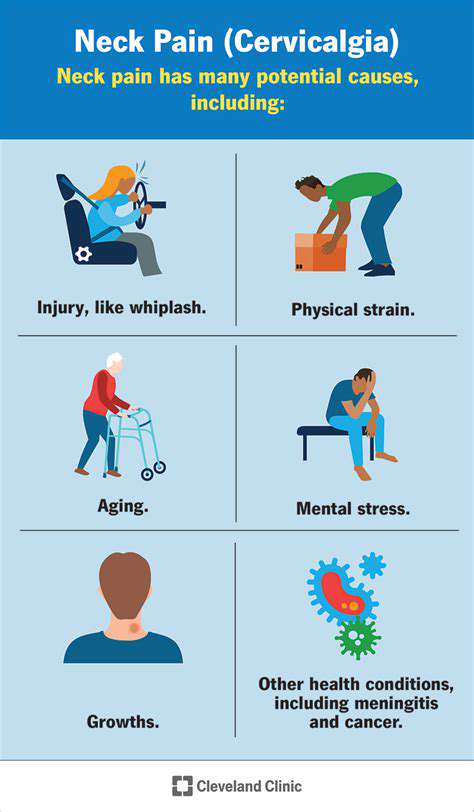Migraine vs. Headache: Understanding the Key Differences
The Role of Triggers in Migraine and Headache: Identifying Patterns
Understanding Migraine Triggers
Migraine triggers are specific factors that can initiate or exacerbate a migraine attack. Identifying these triggers is crucial for preventative strategies. They can be diverse, ranging from environmental factors like changes in weather patterns to dietary components like certain foods and drinks. Recognizing your personal triggers allows for proactive measures to minimize their impact and potentially reduce the frequency and severity of migraine attacks.
Dietary Triggers: A Closer Look
Certain foods and drinks are known migraine triggers for many individuals. These include aged cheeses, processed meats, chocolate, caffeine, alcohol, and fermented foods. Understanding your dietary sensitivities is key to identifying these specific triggers, as responses can vary greatly from person to person. Careful food journaling can help pinpoint patterns and make informed choices about your diet.
Pay close attention to how your body reacts to different foods and drinks, noting any symptoms that might precede or accompany a migraine attack. This detailed awareness can be invaluable in developing a personalized strategy to manage your migraines.
Environmental Triggers: The Impact of Surroundings
Environmental factors play a significant role in migraine triggers, often affecting the body's homeostasis and leading to attacks. Changes in weather patterns, such as barometric pressure fluctuations, can be a major culprit for some individuals. Bright or flickering lights, loud noises, and strong smells can also act as significant triggers. Recognizing these environmental factors allows for the development of strategies to mitigate their impact and create a more migraine-friendly environment.
Stress and Emotional Factors: The Mind-Body Connection
Stress and emotional factors are often overlooked but can significantly contribute to migraine attacks. Stressful situations, anxiety, and even strong emotions can trigger a migraine. Understanding the connection between mental and physical health is essential to managing migraines effectively. Stress management techniques, relaxation exercises, and mindfulness practices are important tools to help prevent migraines associated with emotional triggers.
Sleep Disruptions: The Impact on Migraine Frequency
Irregular sleep patterns or insufficient sleep can significantly increase the likelihood of migraine attacks. A lack of quality sleep disrupts the body's natural rhythms and balance, making it more susceptible to migraine pain. Establishing a regular sleep schedule and creating a relaxing bedtime routine are crucial for preventing migraines associated with sleep disruptions. Prioritizing sufficient sleep is a key preventative measure for managing migraines effectively.
Hormonal Fluctuations: The Role of Hormones in Migraine
Hormonal fluctuations, particularly in women, are a common migraine trigger. Changes during menstruation, pregnancy, or menopause can significantly impact hormone levels, potentially leading to migraines. Understanding these hormonal changes and their impact on the body can help individuals proactively manage migraines associated with hormonal fluctuations. Consult with a healthcare professional to explore potential strategies to manage migraines related to hormonal changes.
Seeking Professional Advice: When to Consult a Doctor

Seeking Guidance for Career Advancement
Navigating the complexities of career advancement can be daunting. Understanding the specific skills and experience required for a desired promotion or role shift can feel overwhelming. Many professionals find themselves needing external support to identify their strengths, pinpoint areas for improvement, and develop a strategic plan for achieving their career goals. Seeking professional advice from experienced mentors or career coaches can provide invaluable insights and actionable strategies to help propel your career forward.
Identifying Your Strengths and Weaknesses
A crucial first step in seeking professional advice is a thorough self-assessment. This involves identifying your core strengths and acknowledging areas where you need to develop. Honest self-reflection is essential, and a career counselor can help you objectively evaluate your skills and experience in relation to your career aspirations. This process often reveals hidden talents and areas for growth, which are critical components in creating a personalized plan for success.
Understanding your weaknesses is just as important as identifying your strengths. A seasoned professional can help you develop strategies to address these areas and build confidence in your abilities.
Developing a Clear Career Path
With a clear understanding of your strengths and weaknesses, you can begin to formulate a concrete career path. Defining specific goals and outlining actionable steps towards achieving them is paramount. A career counselor can help you break down large goals into smaller, manageable tasks, creating a roadmap that makes your career progression more attainable and less intimidating. This structured approach often leads to a more focused and successful career trajectory.
Overcoming Challenges in the Workplace
Workplace challenges can be surprisingly complex, often requiring specific strategies for effective resolution. A career advisor can provide valuable tools and strategies for navigating conflicts, improving communication, and effectively handling challenging situations. They can also help you develop strategies to manage stress and maintain a positive mindset in the face of adversity. Knowing how to address workplace hurdles empowers you to perform at your best and build strong professional relationships.
Building a Strong Network and Making Connections
Networking is a critical component in career advancement. A career advisor can guide you in building a strong professional network, connecting you with valuable contacts and mentors. Developing strong relationships with key individuals in your field can open doors to new opportunities and provide invaluable support. They can also help you refine your networking strategies, ensuring that you make the most of every interaction and build lasting professional relationships.





